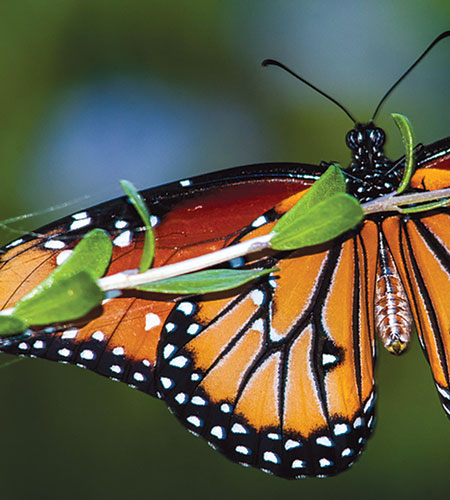- Details
-
Published: Wednesday, 11 December 2019 00:00
 Oh, to be a kid again. What a magical time of the year. A wonderful time of the year when traditions are born, and memories are made. Homes will be filled with Christmas trees and pine boughs that exude the smell of Christmas! Nutmeg and cinnamon, chile and roasting turkey lend their mouthwatering smell to the mix of fresh baked sugar cookies. Daddies are out stringing Christmas lights and inflating reindeers and Snoopys and Charlie Browns as one neighbor tries to outdo the other to see whose yard will attract the most attention.
Oh, to be a kid again. What a magical time of the year. A wonderful time of the year when traditions are born, and memories are made. Homes will be filled with Christmas trees and pine boughs that exude the smell of Christmas! Nutmeg and cinnamon, chile and roasting turkey lend their mouthwatering smell to the mix of fresh baked sugar cookies. Daddies are out stringing Christmas lights and inflating reindeers and Snoopys and Charlie Browns as one neighbor tries to outdo the other to see whose yard will attract the most attention.
Every community is offering something special for us to enjoy with their traditional offerings... lf we could take advantage of all the festivities being offered, we would be busy every weekend traveling from town to town to enjoy parades, special music, theater, sand sculptures, Christmas lights, Holiday Villages, Christmas tree forests and manger scenes.
A Sandcastle Village will be on display at South Padre Island, near Louie’s Back Yard and Gravity Park. Viewing started November 25 and will last until January 13. The sand sculptures all have a holiday theme. The weather has been beautiful for a visit to South Padre Island, so pile the kids, or your group of friends, in the car and head for the island.
Brownsville has developed a tradition in their Holiday Village Display. Now in its 10th year, the display has grown from 10 to 33 miniature houses all decked out in holiday finery. Go early perhaps to start your trip with a visit to Gladys Porter Zoo. The lights turn on in the houses at dusk, but if you wait too late you will have difficulty finding a parking place.
Museums in both McAllen - the IMAS - and in Harlingen - Harlingen Arts and History Museum - have Christmas Tree Forests. These displays have become a tradition when individuals, clubs or businesses, elect to decorate a Christmas tree with a special theme.
I entered a tree for several years. One year I used my late husband's collection of Micky Mouse memorabilia for the decorations. Another year, I used my daughter's collection of dolls from around the world. Once a local antique store decorated her tree with teacups, saucers and lace doilies for a very feminine and original presentation. Each tree has something different and interesting for visitors to see.
Viewing of the Christmas Tree Forest at the IMAS is included in the cost of admission. The trees will be on display through January 4, 2020. Donations are welcomed at the Harlingen Arts and History Museum as there is no entrance fee. The trees are on display until early January.
Hidalgo celebrates with their Festival of Lights with daily live performances from December 1st to the 30th• The free performances start at 7 p.m. and last approximately one hour. The Festival is held outside in front of the Hidalgo City Hall where the grounds are decorated with lighted life size presentations. Trolley rides are offered for a small fee and will take you through a fairy land of Christmas lighting.
The biggest extravaganza of all may well have been in McAllen for their parade of giant inflatable balloons that followed a set route. This extraordinary, super display has become an annual event so if you missed it this year, there will be a next year. The parade follows a set route, but there is also a chance to purchase reserved seating.
At least one church will be hosting a live Nativity December 21 and 22. The First United Methodist Church of La Feria will host its Live Nativity from 6 to 7:30 p.m. on the Saturday and Sunday mentioned. The church parking lot will become the town of Bethlehem and visitors can either walk or drive through the village and see the original Christmas story of the birth of Jesus.
The gifts may be piling up under your Christmas tree but let us remember that not all families will be able to visit the beautiful Christmas displays. Lack of a car or lack of money to buy gas may prevent some families from sharing in the wonders of Christmas. There will be some who cannot afford the Christmas tree nor the gifts to go under it. Churches, schools and many organizations join in another traditional happening - the drive that is organized for Toys for Tots. We can all share in the gift of Christmas by donating to this drive. Even a small gift will make some child happy.
Christmas is a wonderful time of the year! Let's make it a wonderful time of the year for all!
- Details
-
Published: Wednesday, 27 November 2019 06:00
 Thanksgiving is here. It's a special time when all of us can give thanks for our lives and the many blessings that we have received. Then it is Christmas – a wonderful time of year when families get together and share the excitement of opening gifts among family and friends. And before we know it, it is December 31, New Year's Eve, and time for us to look back over the past year at what we have done and what we failed to do. Most of all, we need to look forward to what we will do in the coming new year.
Thanksgiving is here. It's a special time when all of us can give thanks for our lives and the many blessings that we have received. Then it is Christmas – a wonderful time of year when families get together and share the excitement of opening gifts among family and friends. And before we know it, it is December 31, New Year's Eve, and time for us to look back over the past year at what we have done and what we failed to do. Most of all, we need to look forward to what we will do in the coming new year.
The new year, 2020, is truly upon us! As we meditate on our blessings, perhaps we should examine how we have shared those blessings with others. Perhaps we are using the excuse that we have so little to share, it wouldn't make a difference. Not true! Over time, a little at a time can add up to a whole, whole lot!
For example, let's look at what a difference the Minten Sisters have made with their gifts to Driscoll Children's Hospital. The three sisters, Dorothy, Esther, and Janie, have made a huge difference with their sharing during the past years. In 1976, they had decorated their entire home with their collection of Christmas memorabilia kept from their childhoods and into their adult years. To all of these they had added many new decorations. They had a couple of parties and an open house that year for family and friends. The next year, they had the parties but needed to have two open houses to accommodate all the family and friends who wanted to see all the different things they had collected during the past year.
By 1981, they were having six open houses plus several other parties with over 600 people attending. Before sending out the invitations for the 1982 events, the three sisters and their parents (now deceased) decided to make these parties count for something. It was decided that the family would give $2 for every guest that attended that Christmas. By 1986, so many people had heard about their Christmas decorations and the imaginative, creative way in which they displayed them in their ranch home, that they were prompted to open their home for public tours by reservation only. (Do not just drive up to their home unannounced! You must have reservations or be part of a pre-arranged tour.)
Their home became known as The Christmas House, and next door in the farmhouse, their grandfather had built in 1926, they opened a year 'round Christmas store called Santa's Texas Workshop. Now, the sisters (Dorothy aged 92, Esther, 88, and Janie, 75) are currently in their 34th year of having their home open to the public. They are still raising money for Driscoll Children's Hospital.
How have they done this? There are several ways--$1 from each modest entrance fee charged to paying guests; $2 for each non-paying guest (family, close friends, paying guests who return for subsequent tours during the same season). The sisters share the latter by adding their 1/3 to their own personal donations which they give annually.
Then there is the ORGAN FUND. In 1993, a guest from McAllen jokingly gave Dorothy a nickel "tip" for playing the antique pump organ. Dorothy didn't want her to do that, so she told the lady that she would make sure that the nickel would be given to Driscoll at the end of the season. Other guests left money on the organ during the remainder of the season, so it became a separate way to raise money. Since then, every year, guests at the first tour of each season have started the Organ Fund, and tour guests have perpetuated it to the tune of a grand total of $91,590.46. Every penny of that Organ Fund goes to Driscoll Children's Hospital to help children in South Texas who have heart problems. It is part of the grand total, $360,025, raised since 1982. It is proof that everyone makes a difference.
According to Janie Minten, some of their most generous guests who contribute to the Organ Fund are the students from La Gloria School, a small elementary school founded in 1909 to serve the educational needs of the rural ranching/farming community. (The Minten Sisters grandfather was one of the three founders). Five generations of Minten family descendants have attended that school, and Dorothy and Esther came back after college and each taught there for over 30 years each!
Every year, the sisters invite the school to bring each of their classes (pre-k through 6th grade) to tour the Christmas House. All of those children are admitted free, but they love to bring donations to put on the organ. They also love to shop the after Christmas ½-price sale after their tour of the house. When paying, if they have change coming, most of them say, "Just keep the change, I want to help the children who are sick!" That money is always added to the Organ Fund!
So, what started in 1982, as a small donation from the Minten Family has now become a sizeable amount contributed to by thousands of people during the years. What started as a nickel donation on the organ has contributed a grand total that is now getting close to $400,000.00. None of us have so little that we cannot share what little we have. We, too, can make a difference!
Over time, even a nickel multiplies and continues to multiply. Let us all share our talents and our blessings and remember what Charles Dickens said through the character of Scrooge, "I will honor Christmas in my heart and try to keep it all the year!"
- Details
-
Published: Wednesday, 20 November 2019 00:00
 Have you noticed? The latest thing in specialty tours are those tours that are offering destinations that feature foods from their area. The latest travel e-mail that promoted cuisine destinations featured Poland - and not just Poland, but a tour that offered time in Northern Poland to sample their cuisine followed by a visit to Southern Poland to taste their typical foods.
Have you noticed? The latest thing in specialty tours are those tours that are offering destinations that feature foods from their area. The latest travel e-mail that promoted cuisine destinations featured Poland - and not just Poland, but a tour that offered time in Northern Poland to sample their cuisine followed by a visit to Southern Poland to taste their typical foods.
The United States can offer some typical foods also but dividing our country into two sections for food would be virtually impossible. For us it is much better to look at states and then break those states into regions.
Perhaps, one of the foods most typical for the state of Texas might be bar-b-que with the city of LaGrange considered the bar-b-que capitol. Recently, I heard a discussion on the differences in bar-b-que sauce. Texas bar-b-que tends to have a little chili and maybe just a touch of bourbon or beer. On the other hand, bar-b-que sauce prepared in North or South Carolina will taste a little sweet. Pecan pies or sweet potato pies also tend to have their claim to fame in East Texas and parts of Louisiana.
Our Rio Grande Valley region certainly has their very own food heritage, most of which originated in Mexico ... we call it Tex-Mex or Mex-Tex. In our region we can offer tacos, enchiladas, empanadas, tamales and on and on. My taste buds are watering just thinking of all those wonderful, delicious dishes that started in Mexico, jumped across the border, and often picked up a little Texas flavor, producing dishes that are not really Mexican nor are they really Texan.
One of the most popular is the local taco - do you want a breakfast taco prepared with a flour tortilla wrapped around eggs and potatoes, wrapped around eggs and beans, or filled with eggs and chicharrones (pig skins)? Or how about tacos for lunch with fajitas stuffed temptingly inside a doubled over, fried corn tortilla?
Another specialty of this area is the tamale - a specialty served year-round but extremely popular during the Christmas season. One of the fillings for the tamale is pork, but it could be beans or chicken or even coconut and raisins. Local families will prepare well in advance for the traditional Christmas feast and the Posada - posada translates to inn. A posada is a re-enactment of Mary and Joseph searching for a place to stay where the Christ child could be born. The mouthwatering dish often served at a Posada will not be turkey and dressing as so many might expect. In the Rio Grande Valley, the main dish will probably be tamales.
Making tamales is no small chore. First you must buy all the ingredients including the corn husks, the lard, the pork, the spices and the masa - a very, very finely ground corn flour. Because the preparing of tamales is such a labor-intensive chore, families often gather together with neighbors and have what is endearingly termed a tamalada ... the work will go a little faster if a little gossip is thrown in as the masa is spread on the corn leaf! Just image the bathtub, or a number three wash tub, filled with tepid water in which the separated com husks are soaking. Once those leaves become pliable, they are ready to be trimmed and then spread with the masa mixture followed by the prepared filling. The corn husk blanket will then be tenderly folded over and put aside to be frozen. Later those delicacies will be steamed and served for the eager guests to enjoy.
Now don't try to make tamales on your own unless you can differentiate between the right and the wrong side of the corn leaf. It does make a difference!
Even though I really enjoy a good tamale, my favorite of all the typical Mexican dishes is the empanada - similar to the fried pies my mother used to make. The Mexican version is not fried but baked - better for our health - even if the dough is prepared using lard. Favored fillings could be camote - sweet potato - or pineapple or even cajeta - a caramel tasting spread.
Although these dishes had their beginnings in Mexico and spread to Texas, these flavorful offerings can now be found all over the United States and beyond. People who grew up in this area, went away to school or to work, will always come home with a craving for a "Taste of the Valley" just as I have substituted the empanada for the fried pies my mother made. It's a taste of home!
- Details
-
Published: Wednesday, 13 November 2019 00:00
 Museums abound in South Texas. If you or your child or grandchild are interested in history, then you have come to the right place. Museums and history can be so much fun! There are so many museums from Edinburg all the way down to Port Isabel and South Padre Island. Museum after museum after museum could entertain you on any of your week end exploratory drives. Let's start with Edinburg and the MOSTH museum ..... MOSTH standing for Museum of South Texas History.
Museums abound in South Texas. If you or your child or grandchild are interested in history, then you have come to the right place. Museums and history can be so much fun! There are so many museums from Edinburg all the way down to Port Isabel and South Padre Island. Museum after museum after museum could entertain you on any of your week end exploratory drives. Let's start with Edinburg and the MOSTH museum ..... MOSTH standing for Museum of South Texas History.
Exhibits take you back to pre-historic times in our area with a mammoth to greet you as you arrive. This museum depicts the history and culture of our area into the 1900's. You can even see the saddle that belonged to Pancho Villa. The museum utilizes the old Hidalgo County Jail, beautifully situated on Closner Street in the very center of Edinburg. Part of the old jail is still intact, and although it brought shivers to my spine, my grandson thought it was really cool. The first time I visited this museum, I was very impressed with the bi-lingual explanations on all of the displays. Since our history and culture definitely tie to that of Mexico, it seemed only fitting to me that people from either country or either culture should be able to read about our history. The museum is closed on Mondays, but other days of the week, convenient hours are Tuesday through Friday from 10 a. m. to 5 p.m.; Saturdays 10 a.m. to 4 p.m.; and on Sundays from 1 p.m. to 5 p.m. Call (956) 383-6911 to verify times and any entry fees.
On the other end of the scale would be a second museum - The Motorcycle Museum - with an awesome collection of vintage bikes. Although it is quite small, the cycles displayed are all in very good condition and would no doubt appeal to those who like motors and engines and like to admire the evolution of the Harleys and Indians that are on display. This museum is located at 4403 Richardson Rd. in Edinburg and is open.
All the way from Edinburg to South Padre Island, almost every town has at least one museum. Perhaps one of the most interesting to the young, and to the more energetic, would be the Light House in Port Isabel. This Light House is the only one remaining on the Texas Coast that you can actually enter and climb some 80 winding steps to the top. There, you will have a magnificent view of Port Isabel, South Padre Island and the sparkling blue waters of the Gulf of Mexico. You can even see across the channel to Space X on Boca Chica Boulevard! The light house was constructed in 1852 to guide ships through Santiago Pass. I sometimes wonder if perhaps the light house was built not just to guide the ships, but perhaps as a deterrent to Jean La Fitte, the famous pirate who often visited South Padre Island.
Old timers say that Lafitte tied lanterns to donkeys’ legs and had them walking up and down the island. Ships offshore, seeing the blinking lights, would think that must be a village and would run their ships
aground as they tried to make shore only to be looted by the pirates waiting to take their bounty. Just maybe the locals were tired of Lafitte's shenanigans and wanted the pirates to move north and east towards Galveston and New Orleans. Who knows? But if you are taking young ones, or someone with an imagination, they will like the donkey story.
And while talking about Jean Lafitte, why not visit his well in Laguna Vista? Never did I believe that you could really find fresh water if you dug down deep enough - especially if you dug on the leeward side of an island. Then one Saturday afternoon, a lady friend and I were out exploring for a possible shelling tour to Puerto Mezquita, Mexico. As we looked across the bay to the barrier island, we saw several men gathered around what appeared to be a big hole dug into the sand. Buckets of water were being hauled up and poured into 55-gallon drums. Even after filling the drums, the men kept waiting around the well.
Finally, we realized that they must be waiting for us to leave so that they could enjoy their weekly Saturday bath. So much for wells in salty terrains. Maybe Jean Lafitte also enjoyed a weekly freshwater bath at his well!
- Details
-
Published: Wednesday, 30 October 2019 00:00
 Right now, the Monarch Butterflies are migrating right through the Rio Grande Valley - and so were the Monarch Ultra Runners. On Sunday, October 20, the runners made an overnight stop in Pharr before crossing the Mexican border the next morning to follow the path of the Monarch as they fly from Ontario, Canada to their winter home deep in Mexico. The migration route used by these colorful creatures covers 2,671 miles.
Right now, the Monarch Butterflies are migrating right through the Rio Grande Valley - and so were the Monarch Ultra Runners. On Sunday, October 20, the runners made an overnight stop in Pharr before crossing the Mexican border the next morning to follow the path of the Monarch as they fly from Ontario, Canada to their winter home deep in Mexico. The migration route used by these colorful creatures covers 2,671 miles.
Three locals joined the Ultra Runners on their last leg into Pharr - Harlingen cardiologist Dr. Charles Mild; Jose Uribe, from the Texas Parks and Wildlife Department; and Angel Guzman, a high school science teacher and Texas Master Naturalist.
These runners hope to draw awareness to the declining number of Monarchs and to encourage the planting of native plants that will attract and help sustain the butterflies on their long flight. Mayors from cities across the United States have joined together in their pledge to support habitats to help save the iconic Monarch from further decline. Harlingen's Mayor Chris Boswell became the most recent mayor to sign the pledge when he became the 500th signer. McAllen, however, is a Monarch Butterfly Champion City, an honor bestowed on only a few cities in Texas.
The Rio Grande Valley is blessed to have the National Butterfly Center located near Mission, and right next door to Bentsen Rio Grande State Park. The NABA - North American Butterfly Association - has designated Mission as the Butterfly Capitol of the United States.
Annually, the butterflies begin their migration from Canada to preserves located in the state of Michoacan, Mexico. For years no one knew where these beautiful orange, black and white spotted creatures migrated.
Can you imagine banding these delicate creatures hoping that someone, somewhere, would see the band and report their whereabouts? And that is exactly what happened.

There are two preserves high in the pine covered mountains near Angangueo, Mexico. Another preserve is in Valle de Bravo. Perhaps there are others still waiting to be discovered but those are the preserves that are recognized at this time.
Towards the end of October, South Padre Island annually recognizes the importance and beauty of the migratory Monarch with a Gala and a two-day celebration. Mission will celebrate the migration with their 24th annual Butterfly Festival on November 2 at the 100-acre National Butterfly Center, abundantly planted with native plants that butterflies thrive on.
But nothing can equal the actual experience of visiting the Winter home of the Monarchs located in the Sierra Madres of Mexico. From a distance, the pine trees covering the mountain side will look orange - not green - from the millions of Monarchs that are clustered on the branches. As the Monarchs begin to wake up, they will fall to the ground. Stunned, but not dead, they wait for the sun to warm their wings before they fly down the mountain side for water and food.
All the visitor must do is be patient, be still and be quiet. Listen and you might even hear the flutter of their wings. Better yet is when the Monarchs land on you, in your hair and on your clothing. It will be a magical moment!
 Oh, to be a kid again. What a magical time of the year. A wonderful time of the year when traditions are born, and memories are made. Homes will be filled with Christmas trees and pine boughs that exude the smell of Christmas! Nutmeg and cinnamon, chile and roasting turkey lend their mouthwatering smell to the mix of fresh baked sugar cookies. Daddies are out stringing Christmas lights and inflating reindeers and Snoopys and Charlie Browns as one neighbor tries to outdo the other to see whose yard will attract the most attention.
Oh, to be a kid again. What a magical time of the year. A wonderful time of the year when traditions are born, and memories are made. Homes will be filled with Christmas trees and pine boughs that exude the smell of Christmas! Nutmeg and cinnamon, chile and roasting turkey lend their mouthwatering smell to the mix of fresh baked sugar cookies. Daddies are out stringing Christmas lights and inflating reindeers and Snoopys and Charlie Browns as one neighbor tries to outdo the other to see whose yard will attract the most attention.



 Museums abound in South Texas. If you or your child or grandchild are interested in history, then you have come to the right place. Museums and history can be so much fun! There are so many museums from Edinburg all the way down to Port Isabel and South Padre Island. Museum after museum after museum could entertain you on any of your week end exploratory drives. Let's start with Edinburg and the MOSTH museum ..... MOSTH standing for Museum of South Texas History.
Museums abound in South Texas. If you or your child or grandchild are interested in history, then you have come to the right place. Museums and history can be so much fun! There are so many museums from Edinburg all the way down to Port Isabel and South Padre Island. Museum after museum after museum could entertain you on any of your week end exploratory drives. Let's start with Edinburg and the MOSTH museum ..... MOSTH standing for Museum of South Texas History. Right now, the Monarch Butterflies are migrating right through the Rio Grande Valley - and so were the Monarch Ultra Runners. On Sunday, October 20, the runners made an overnight stop in Pharr before crossing the Mexican border the next morning to follow the path of the Monarch as they fly from Ontario, Canada to their winter home deep in Mexico. The migration route used by these colorful creatures covers 2,671 miles.
Right now, the Monarch Butterflies are migrating right through the Rio Grande Valley - and so were the Monarch Ultra Runners. On Sunday, October 20, the runners made an overnight stop in Pharr before crossing the Mexican border the next morning to follow the path of the Monarch as they fly from Ontario, Canada to their winter home deep in Mexico. The migration route used by these colorful creatures covers 2,671 miles.










